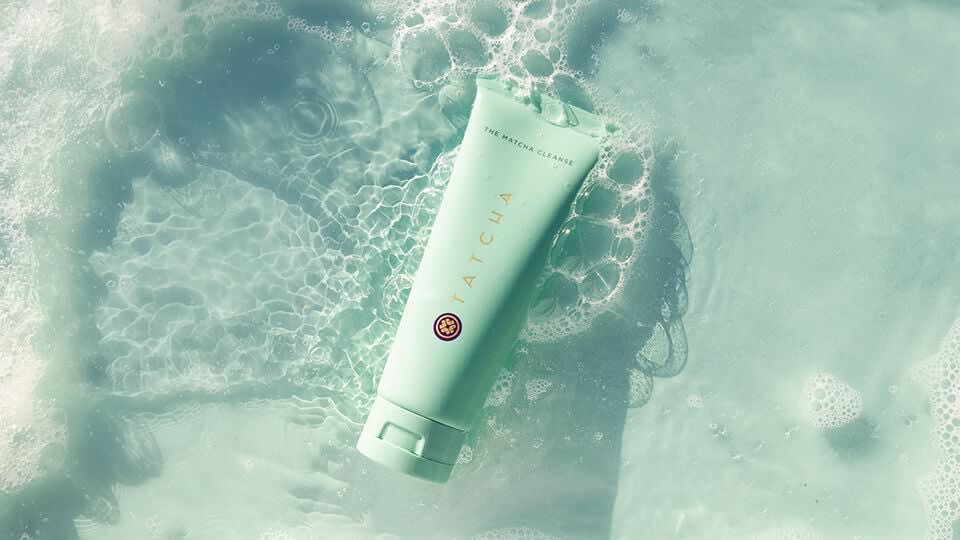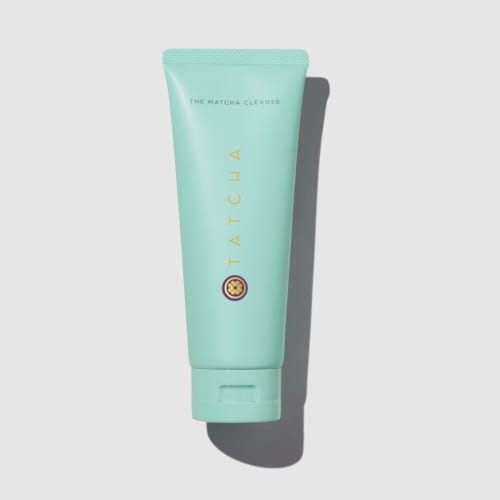Pores are a frequent target of our skincare attentions—from clearing them to shrinking them—and no product does more to help them than a good, deep-cleaning face wash.

Pores are like opinions: Everybody has them. And you might be surprised to learn just how many there are.
Those who study skin have known about pores for a long time. A French encyclopedia entry, written by the scholar Louis de Jaucourt in 1765, described “excretory conduits or pores that continually expel superfluous humors” invisible to the human eye. These channels are crucial in trafficking liquids, like sweat and sebum, up and out of skin.
There are millions of pores on the human body, and a large concentration on the face in particular. The idea that we are covered in tiny holes that connect our bodies to the environment around us has been a matter of some poetic fascination—in Hold On, Henry David Thoreau implores himself to “open all my pores and bathe in all the tides of Nature,
in all her streams and oceans, at all seasons.” But due to their active role in skin’s function, maintaining these channels seems as crucial to skincare as maintaining pipes is to plumbing. Their important function makes them a natural locus of our attention.
It’s true that a good skincare routine can have an effect on one’s pores, and some products, like pore cleansers, have even been shown to unclog, even change the appearance of pores. But before you learn about cleaning skin pores, you may be interested to hear a little more about what we’re talking about when we talk about our face’s pores.
What are pores?
Pores are openings in the outermost skin layer, or epidermis, that extend down into the skin, or dermis. As a dermatologist explained to the New York Times, they are “deep, narrow crannies with oil-secreting glands at the bottom.” They may or may not contain a hair follicle, but they often contain a sebaceous gland. Pores are also home to their own microbial biomes. A 2022 study suggested that each pore was home to only a single variety of C. acnes bacteria, indicating that, even among millions, each pore is highly specialized—“a world unto one’s own.”
The porous nature of skin allows it to more effectively move fluids, like sebum or sweat, up and out of the dermis. At times, these substances build up, and cause clogging. Clogged pores can become blackheads or whiteheads, depending on their composition. In more severe cases, they can lead to acne. The best defense is prevention, by keeping skin clean, and clearing away dirt and impurities at least once each day. Nothing beats a good cleanser for clogged pores.
Can a pore be unclogged?
A clogged pore is as common a skincare issue as it gets—and unlike other skin issues, they’re easy to take care of, if you do so correctly. First, it’s important to be able to distinguish a clogged pore from other pore-related abnormalities.
Acne is easy to identify: Red bumps or nodules rising off of skin with a white peak. A clogged pore is something more subtle. Dermatologists refer to these pore-related phenomena as comedones. An open comedone is also known as a blackhead, named for the dark mass of gunk it appears as. Closed comedones, closer to the acne we know and learn to love, are called whiteheads; in these cases, skin has formed a thin seal over top of the comedone or pore. These are common for all people, but especially adolescents and those with oily skin.
For the beauty-obsessed, it’s tempting to pore over every pore. But too much attention can be a bad thing. Sebaceous filaments, or straw-like structures that line our pores, are sometimes confused with white and blackheads. While it’s safe to remove them, doing so can make pores appear larger in the long run. When it comes to any suspicious pore, it’s never a bad idea to ask your local dermatologist for assistance. Better safe than sorry!
Can pores be shrunk?
In our mind’s eye, we think of skin as a smooth surface. But look closely, and you’ll see that’s not the case. Look too closely, and you might never stop. One 2014 survey of around two-thousand adults found that almost half wanted to shrink their pores. One in five women surveyed said they thought about their pores once daily at least.
The promise that a pore can be shrunk has been around for about as long as the beauty industry. And while it’s true that some skincare formulations, like exfoliating acids or retinol, can minimize pores and make them less noticeable, it’s simply not possible to shrink them. They can, however, get bigger, and they will with age.
In addition to proper exfoliation, a good daily cleanser can make sure that pores remain clean, clear, and unclogged. Out of mind, out of sight.
How to unclog pores
Clogged pores happen to us all, because buildup happens to us all. It could be from a skincare product, or the weather, or a medication, or even our genetics, but for some reason or another, a sebaceous gland produces a little too much sebum, and it gets stuck on its way out of the pore. Soon, a clog forms.
The simplest method for unclogging pores is to maintain good skin hygiene with regular cleansing and moisturizing. You can’t inspect every pore, let alone treat them uniquely, but by maintaining baseline good habits, you can ensure your skin stays cleansed, nourished, and protected.
On the higher maintenance end, there are a number of ways to unclog pores, by using ingredients like beta hydroxy acids or BHA alternatives, clay masks, and going for facials. But none of these options will do much good if you don’t have a solid tool for this particular clog—by which we mean a good pore cleanser.
The best deep pore cleanser
Face washes come in all different substances and styles, but when you’re looking for a pore cleanser, you’ll probably want a formula with depth; that is, something that can really sink down into the skin, where comedones and sebaceous glands and hair follicles live. This is a job for a gel cleanser. These water-based formulas often promise “deeper” cleans than their cream or oil counterparts; their unique slippery texture allows them to reach down into pores, turning into foam as they lather. Bonus points if your cleanser contains ingredients like BHAs (or BHA alternatives for those of us with dry or sensitive skin), which have shown to be beneficial on acne-prone skin for its oil-controlling abilities.
One pore perfect cleanser is Tatcha’s brand-new Matcha Cleanse, a gel cleanser tailor-made for oily and acne-prone skin. Like all of Tatcha’s cleansers, it’s made with powerful Japanese botanical ingredients—like antioxidant-rich powdered green tea and skin-refining coix seed extract, a BHA alternative. Like a good cup of tea, it soothes and restores. Plus it leaves skin primed and ready for moisturizer and makeup. But not before purifying and decongesting pores. Skin is cleansed, not stripped. You may find it aglow. And rest assured, it’ll be hard to notice anything else.


